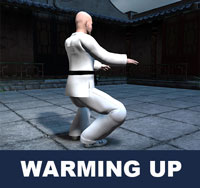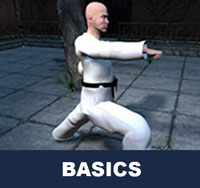Taekwondo 태권도Taekwondo Preschool
When you reach senior belt you are expected to guide the junior belts when they are beginning Taekwondo such as showing by example. To advance from one rank to the next, students typically complete promotion tests in which they demonstrate their proficiency in the various aspects of the art before a panel of judges or their teacher. View Taekwondo belt levels »

About Skipping Rope
The risks and benefits of combining stretching with warming up are disputed, although it is generally believed that warming up prepares the athlete both mentally and physically.
* Please see a certified Master Instructor ( 사범님 sabeomnim ) for training. Proper guidance and instructions are needed to ensure safe training.
The jumper keeps both feet slightly apart and jumps at the same time over the rope. Beginners usually master this technique first before moving onto more advanced techniques.
In contrast to running, jumping rope is unlikely to lead to knee damage since the impact of each jump or step is absorbed by the balls of both feet rather than the heels. This decreases the ground reaction forces through the patella-femoral joint greatly.
Skipping may be used for a cardiovascular workout, similar to jogging or bicycle riding. This aerobic exercise can achieve a "burn rate" of up to 700 calories per hour of vigorous activity, with about 0.1 calories consumed per jump. Ten minutes of jumping rope is roughly the equivalent of running an eight-minute mile. Jumping rope for 15–20 minutes is enough to burn off the calories from a candy bar.
Weighted jump ropes are available for such athletes to increase the difficulty and effectiveness of such exercise. Individuals or groups can participate in the exercise, and learning proper jump rope technique is relatively simple compared to many other athletic activities. The exercise is also appropriate for a wide range of ages and fitness levels.
Difficulty of Warm-Up Exercise
The risks and benefits of combining stretching with warming up are disputed, although it is generally believed that warming up prepares the athlete both mentally and physically. The more difficult the warm-up, the more practice may be needed for the purpose of improving or mastering it, as in the phrase 'practice makes perfect'.
* Please see a certified Master Instructor ( 사범님 sabeomnim ) for training. Proper guidance and instructions are needed to ensure safe training.

Taekwondo Basics
Here is where you can learn more about Taekwondo 태권도. Knowing the fundamental basics is very important for your learning path as you build your skills and knowledge. There are certain rules that need to be followed to show respect to the master ( 사범님 sabeomnim ), the instructors ( 교사님 gyosannim ), other practitioners and to the martial arts. They vary between schools but many have similar rules and guidelines. For more information View Taekwondo Basics »
Please follow the guidance of a certified Master Instructor or trainer when doing sports related activities. The article provided on this page is information that is widely available on Wikipedia article "Skipping Rope (exercise)". Risk of injury can be reduced by completing an effective warm up consisting of a heart raiser to get your pulse up, followed by sport specific dynamic stretches (stretches whilst moving).
RESOURCES
This article uses material from the Wikipedia article "Skipping Rope (exercise)", which is released under the Creative Commons Attribution-Share-Alike License 3.0.
























